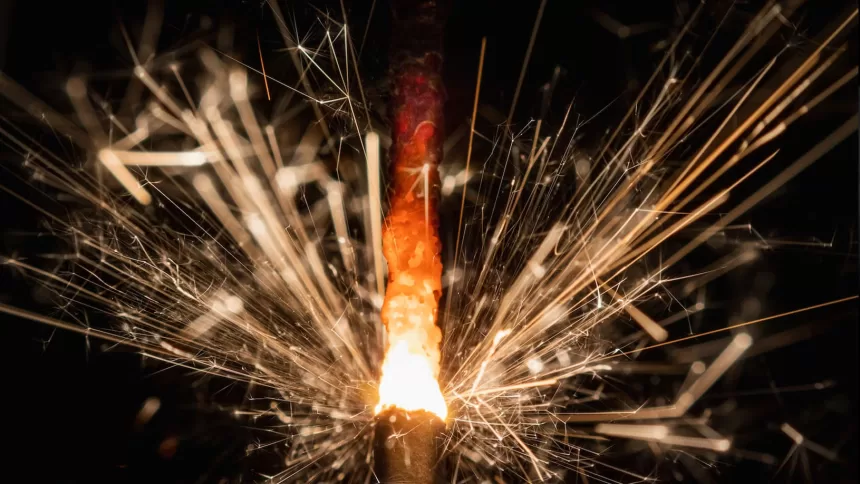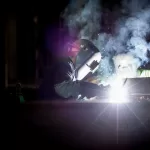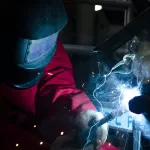Welding is a process that demands careful attention to safety to prevent potential hazards. Whether it’s for industrial applications or small-scale projects, prioritizing safety above all else is paramount. Adequate training and a comprehensive understanding of safety standards are essential prerequisites for anyone engaged in welding.
7 Safety Precautions to Enforce Today to Ensure Welding Safety
Welding Town
During welding, workers must be well-versed in the proper techniques and safety protocols. They should have the knowledge to identify potential risks and how to mitigate them effectively. Protective gear, such as welding helmets, gloves, and fire-resistant clothing, should be utilized to safeguard against sparks, heat, and harmful radiation.
Moreover, maintaining a safe working environment is crucial. This includes removing flammable materials from the vicinity, ensuring proper ventilation to prevent exposure to harmful fumes, and adhering to established safety guidelines. Regular inspections of welding equipment and tools also play a pivotal role in accident prevention.
By prioritizing safety and adhering to proper training and standards, workers can execute welding tasks efficiently while minimizing the associated risks. Emphasizing safety in welding practices not only protects workers but also contributes to a more productive and secure work environment.
1. Need for Protective Equipment and Proper Maintenance
Welders must prioritize their safety by using essential protective gear such as gloves, goggles, helmets, and respiratory protection. These items act as a safeguard against potential injuries and hazards while performing welding tasks. Adequate training in hazard awareness and equipment operation is also crucial for employees to ensure safe practices.
Regular maintenance and thorough checks of equipment are essential to guarantee their safety and proper functioning. By conducting routine inspections, potential issues can be identified and addressed promptly, reducing the risk of accidents and enhancing overall safety.
To protect against burns and harmful X-rays during welding, it is advisable to use a darker lens for optimal visibility and a gradual transition to a lighter lens. This measure ensures the eyes and skin are shielded from exposure to X-rays effectively. Additionally, using flame-resistant gloves adds another layer of protection, further reducing the risk of burns and injuries during welding operations.
In summary, prioritizing safety through the use of appropriate protective gear, proper training, and regular equipment maintenance is crucial for welders to carry out their tasks efficiently and securely. These practices contribute to a safer work environment and help prevent accidents and injuries in welding operations.
2. Fire and Health Safety Precautions
Welding poses a significant fire hazard, particularly when conducted near flammable materials. To enhance safety, it is imperative to have fire extinguishers readily available near the welding area, along with a fire alarm system. Regular checks of fire extinguishers are essential to ensure that the gauge indicates they are fully charged and ready for use.
Implementing standardized procedures is vital to provide instant guidance to individuals facing hazardous situations. These protocols can equip workers with the knowledge and steps to follow in case of emergencies, promoting swift and appropriate responses to mitigate risks effectively.
Health considerations should not be overlooked during welding activities. Having a fully stocked first aid kit in close proximity allows immediate attention to any injuries that may occur. A well-equipped kit ensures that necessary medical supplies are readily available, facilitating prompt and proper care for potential injuries.
By prioritizing fire safety, implementing standardized procedures, and considering health aspects, welders can significantly reduce the likelihood of accidents and injuries. A proactive approach to safety not only protects the workers but also creates a more secure and productive working environment.
3. Clear Working Environment
To ensure utmost safety, welding must be restricted to secure areas that are free from clutter and potential fire hazards. In construction sites, it is crucial to remove any flammable materials from the vicinity before commencing welding tasks. Furthermore, welding should take place in dry locations to minimize risks.
Conducting welding operations in clutter-free environments reduces the likelihood of accidents and allows workers to move freely and focus on their tasks without obstructions. Eliminating flammable materials from construction sites is essential to prevent fire incidents and potential injuries to personnel.
Opting for dry locations for welding offers an added layer of protection. Wet or damp surroundings can pose electrical hazards and increase the risk of accidents. By selecting dry areas, the chances of electrical mishaps and related dangers are significantly reduced.
In summary, adhering to safe locations, clutter-free spaces, and dry environments for welding operations are fundamental measures to safeguard the well-being of workers and prevent potential fire hazards. Prioritizing these precautions ensures a secure work environment and fosters responsible welding practices in any setting.
4. Regular Inspection for Gas Leaks
Proper handling of gas cylinders is essential to ensure safety. It is crucial to maintain gas cylinders in an upright position at all times. Additionally, regulators should never be switched between cylinders.
Handling gas cylinders in an upright position prevents potential leaks and ensures the integrity of the containers. This practice helps maintain the stability of the cylinders and reduces the risk of accidents or damage to the valve connections.
Regulators are designed to fit specific gas cylinders and should not be interchanged. Using the correct regulator for each cylinder is vital to prevent gas leaks and potential hazards. Mismatched regulators can lead to improper gas flow, which may result in dangerous situations for workers and the surrounding environment.
By adhering to these guidelines and handling gas cylinders correctly, the likelihood of accidents and safety risks is significantly reduced. Prioritizing proper handling procedures promotes a secure work environment and fosters responsible practices when dealing with gas cylinders.
5. Proper Storage of Flammable Products
It is crucial to keep flammable liquids and gases far from the welding area to ensure safety. Specifically, for construction sites, specialized storage is highly recommended.
Storing flammable liquids and gases away from the welding area prevents the risk of fire or explosions. Maintaining a safe distance between these hazardous materials and the welding activities minimizes the potential for accidents and enhances the overall safety of the workplace.
In construction sites, it is essential to use specialized storage solutions for flammable substances. These designated storage areas are designed with safety features that cater to the unique needs of construction environments. Proper storage ensures that flammable materials are securely contained and isolated from potential ignition sources like welding operations.
By following these precautionary measures and employing specialized storage for construction sites, the risk of fire incidents and safety hazards is significantly reduced. Prioritizing safe storage practices promotes a secure work environment and prevents potential mishaps in welding and construction activities.
6. Proper Checking and Maintenance of Electrical Nodes
Ensuring proper equipment insulation is essential to prevent electrical shocks to welders. Adequate safety measures include wearing appropriate gloves to avoid contact between electrodes and wet clothing or skin.
Proper electrical insulation between the welding metal and the welder’s body is paramount to safeguard against electrical hazards. This precautionary step reduces the risk of electrical shock and potential injuries during welding operations.
Welders must be diligent in wearing suitable gloves that offer insulation and protection. Avoiding any contact between electrodes and wet clothing or skin prevents electric shocks and maintains a secure working environment.
Regular inspections of electrodes before commencing welding are crucial. This practice helps identify any defects or damage that could compromise the welding process or pose safety risks. By conducting these inspections, welders can ensure the integrity and proper functioning of the electrodes.
In summary, prioritizing equipment insulation, wearing appropriate gloves, and inspecting electrodes contribute to the overall safety of welders and mitigate the risk of electrical accidents. Adhering to these safety protocols ensures a secure working environment and promotes responsible welding practices.
7. Continued Education
Continued education plays a crucial role in ensuring that welders adhere to proper safety procedures and stay current with the best welding practices and standards.
By participating in ongoing education and training programs, welders can enhance their knowledge and skills. They gain insights into the latest safety protocols and industry advancements, enabling them to perform their work with greater efficiency and confidence.
Continued education also helps welders understand the importance of evolving safety standards and regulations. It equips them with the necessary tools to adapt to changing workplace requirements and fosters a culture of safety consciousness.
Moreover, staying updated with the latest developments in welding practices ensures that welders are well-equipped to handle new challenges and emerging technologies. This dedication to learning contributes to the overall advancement of the welding profession and promotes higher levels of safety and professionalism within the industry.
In conclusion, encouraging and supporting continued education for welders is vital to maintaining a safe and productive work environment. The pursuit of knowledge and continuous improvement empowers welders to uphold proper safety procedures and uphold the highest welding standards, ultimately leading to enhanced performance and safety in their craft.
Conclusion
This will help welders follow proper safety procedures and stay up to date with best welding practices and standards.











